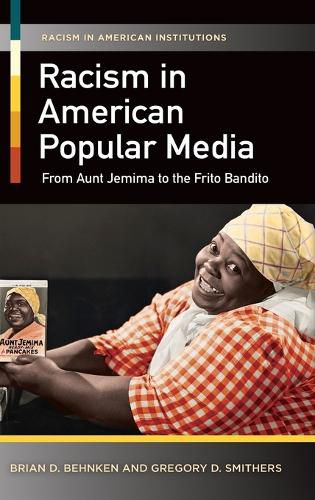Readings Newsletter
Become a Readings Member to make your shopping experience even easier.
Sign in or sign up for free!
You’re not far away from qualifying for FREE standard shipping within Australia
You’ve qualified for FREE standard shipping within Australia
The cart is loading…






This book examines how the media-including advertising, motion pictures, cartoons, and popular fiction-has used racist images and stereotypes as marketing tools that malign and debase African Americans, Latinos, American Indians, and Asian Americans in the United States.
Were there damaging racist depictions in Gone with the Wind and children’s cartoons such as Tom and Jerry and Mickey Mouse? How did widely known stereotypes of the Latin lover, the lazy Latino, the noble savage and the violent warrior American Indian, and the Asian as either a martial artist or immoral and tricky come about? This book utilizes an ethnic and racial comparative approach to examine the racism evidenced in multiple forms of popular media, enabling readers to apply their critical thinking skills to compare and analyze stereotypes, grasp the often-subtle sources of racism in the everyday world around us, and understand how racism in the media was used to unite white Americans and exclude ethnic people from the body politic of the United States.
Authors Brian D. Behnken and Gregory D. Smithers examine the popular media from the late 19th century through the 20th century to the early 21st century. This broad coverage enables readers to see how depictions of people of color, such as Aunt Jemima, have been consistently stereotyped back to the 1880s and to grasp how those depictions have changed over time. The book’s chapters explore racism in the popular fiction, advertising, motion pictures, and cartoons of the United States, and examine the multiple groups affected by this racism, including African Americans, Latino/as, Asian Americans, and American Indians. Attention is also paid to the efforts of minorities-particularly civil rights activists-in challenging and combating racism in the popular media.
Addresses the current and important subject of how the powerful and pervasive messages in the media communicate and reinforce common racial stereotypes about people of color to vast audiences-especially children
Examines popular depictions of people of color going back to the 1880s and details how those depictions have changed
Explores fun subject matter that student readers find interesting-pop culture and how it shapes our daily experiences-with an analytical, critical edge
$9.00 standard shipping within Australia
FREE standard shipping within Australia for orders over $100.00
Express & International shipping calculated at checkout
This book examines how the media-including advertising, motion pictures, cartoons, and popular fiction-has used racist images and stereotypes as marketing tools that malign and debase African Americans, Latinos, American Indians, and Asian Americans in the United States.
Were there damaging racist depictions in Gone with the Wind and children’s cartoons such as Tom and Jerry and Mickey Mouse? How did widely known stereotypes of the Latin lover, the lazy Latino, the noble savage and the violent warrior American Indian, and the Asian as either a martial artist or immoral and tricky come about? This book utilizes an ethnic and racial comparative approach to examine the racism evidenced in multiple forms of popular media, enabling readers to apply their critical thinking skills to compare and analyze stereotypes, grasp the often-subtle sources of racism in the everyday world around us, and understand how racism in the media was used to unite white Americans and exclude ethnic people from the body politic of the United States.
Authors Brian D. Behnken and Gregory D. Smithers examine the popular media from the late 19th century through the 20th century to the early 21st century. This broad coverage enables readers to see how depictions of people of color, such as Aunt Jemima, have been consistently stereotyped back to the 1880s and to grasp how those depictions have changed over time. The book’s chapters explore racism in the popular fiction, advertising, motion pictures, and cartoons of the United States, and examine the multiple groups affected by this racism, including African Americans, Latino/as, Asian Americans, and American Indians. Attention is also paid to the efforts of minorities-particularly civil rights activists-in challenging and combating racism in the popular media.
Addresses the current and important subject of how the powerful and pervasive messages in the media communicate and reinforce common racial stereotypes about people of color to vast audiences-especially children
Examines popular depictions of people of color going back to the 1880s and details how those depictions have changed
Explores fun subject matter that student readers find interesting-pop culture and how it shapes our daily experiences-with an analytical, critical edge